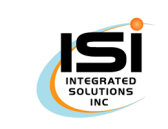- Turnkey Design
- New Product Development
- Design for Manufacturing
- Embedded Controls
- OEM Product Migration
- Automation
A type of project that is designed so that it could be sold to any buyer as a completed product. This is contrasted with build to order, where the constructor builds an item to the buyer's exact specifications, or when an incomplete product is sold with the assumption that the buyer would complete it.
The complete process of bringing a new product to market. A product is a set of benefits offered for exchange. There are two parallel paths involved in the New Product Development process: one involves the idea generation, product design and detail engineering; the other involves market research and marketing analysis. Companies typically see new product development as the first stage in generating and commercializing new product within the overall strategic process of product life cycle management used to maintain or grow their market share.
The general engineering art of designing products in such a way that they are easy to manufacture. The basic idea exists in almost all engineering disciplines, but of course the details differ widely depending on the manufacturing technology. This design practice not only focuses on the design aspect of a part but also on the producibility. In simple language it means relative ease to manufacture a product, part or assembly.
Design for Manufacturing describes the process of designing or engineering a product in order to facilitate the manufacturing process in order to reduce its manufacturing costs. Design for Manufacturing will allow potential problems to be fixed in the design phase which is the least expensive place to address them. The design of the component can have an enormous effect on the cost of manufacturing. Other factors may affect the manufacturability such as the type of raw material, the form of the raw material, dimensional tolerances, and secondary processing such as finishing.
The design stage is very important in product design. Most of the product lifecycle costs are committed at design stage. The product design is not just based on good design but it should be possible to produce by manufacturing as well.
Coming soon...
Coming soon...
The use of various control systems for operating equipment such as machinery, processes in factories, boilers and heat treating ovens, switching in telephone networks, steering and stabilization of ships, aircraft and other applications with minimal or reduced human intervention. Some processes have been completely automated. The biggest benefit of automation is that it saves labor, energy and materials and to improve quality, accuracy and precision.
Automation has been achieved by various means including mechanical, hydraulic, pneumatic, electrical, electronic and computers, usually in combination. Complicated systems, such as modern factories, airplanes and ships typically use all these combined techniques.
